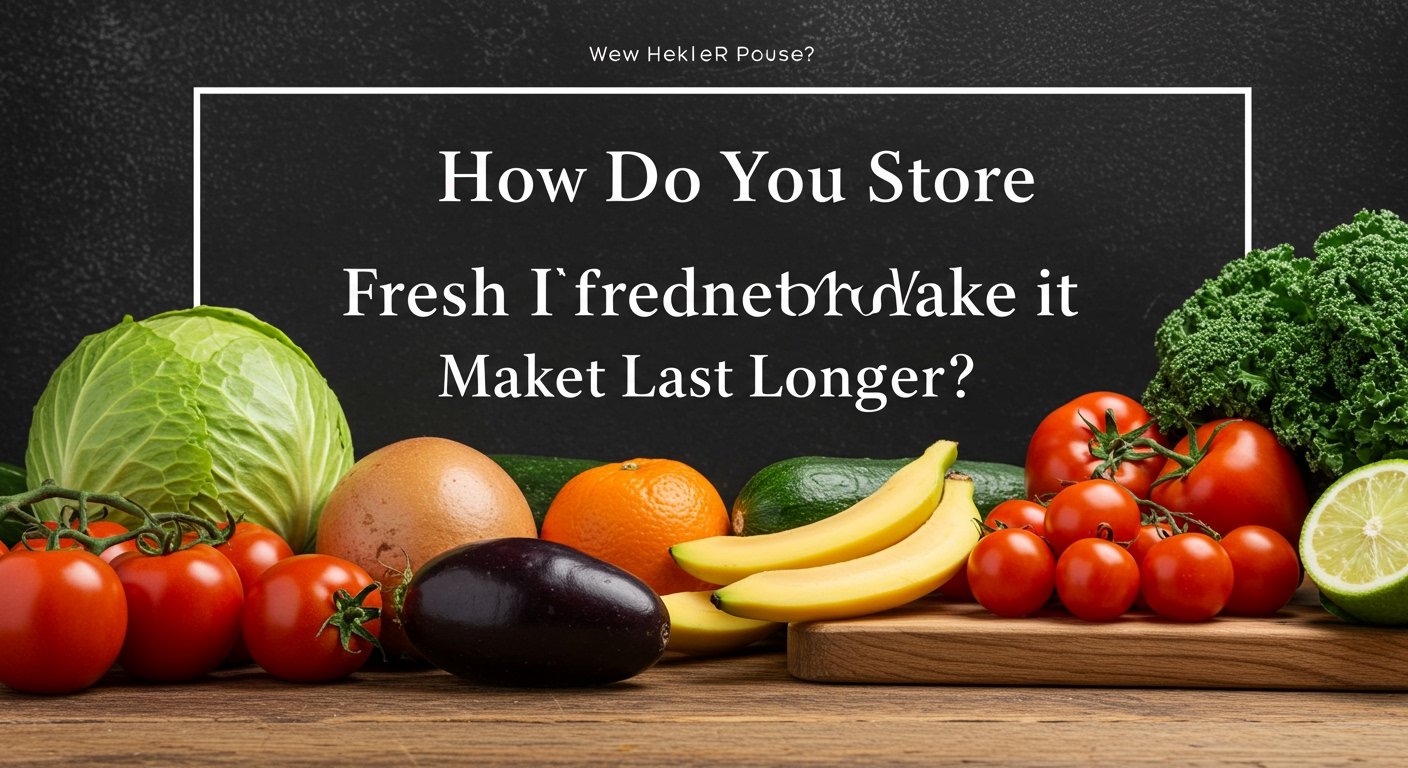Imagine opening your refrigerator to find crisp lettuce, firm berries, and vibrant bell peppers, all still perfectly fresh days, or even weeks, after you bought them. Sounds like a dream, right? For many of us, navigating the world of fresh produce can feel like a race against time, with fruits and vegetables often wilting or spoiling before we get a chance to enjoy them. This common challenge leads to significant waste, both in our homes and globally. In fact, around 45% of the world’s fruit and vegetables go to waste each year, contributing to broader food waste issues where households still make up a staggering 43% of food waste in the United States. [4, 3] This isn’t just bad for the planet; it also hits your wallet, with food waste costing the average household around $2,500 each year. [3]

The good news is that with a little knowledge and some simple changes to your routine, you can drastically improve how you store fresh produce longer, extending its shelf life and saving you money. While about 85.8% of households have never received formal training on food storage, this guide is designed to empower you with expert produce storage tips to make your fresh ingredients last. Let’s dive into the best way to store produce and unlock the secrets to a longer-lasting harvest.
Why Proper Produce Storage Matters
Beyond the financial savings, understanding proper produce storage is a crucial step towards reducing your environmental footprint. When food goes to waste, all the resources used to grow, transport, and package it – water, energy, and labor – are also wasted. By learning how to keep vegetables fresh longer and keep fruit fresh longer, you’re making a positive impact on both your budget and the planet. This guide will help you prevent produce spoilage, ensuring more of your delicious ingredients make it to your plate.
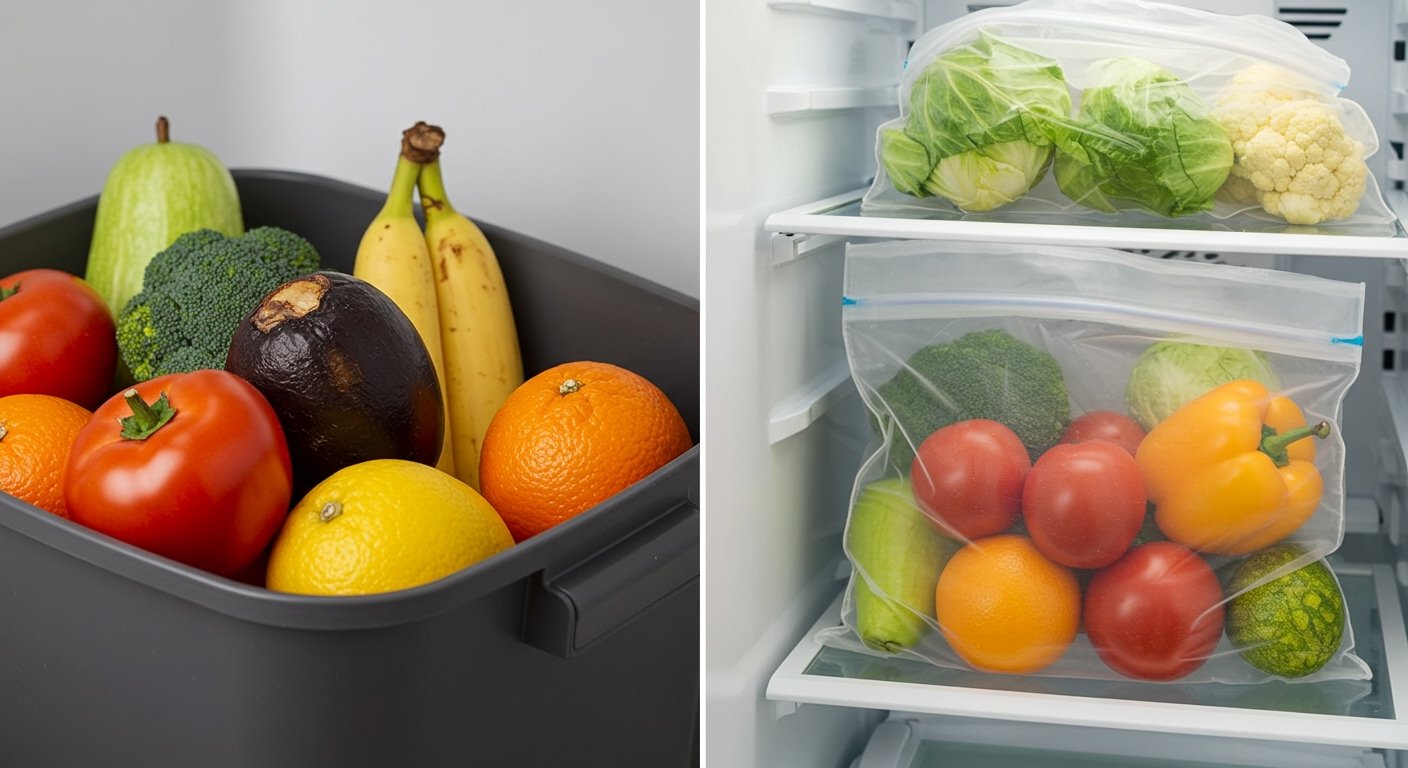
The Golden Rules for How Do You Store Fresh Produce Longer?
Making your produce last starts with a few fundamental principles. Think of them as the commandments of fruit and vegetable storage. By following these, you’ll be well on your way to a more sustainable and less wasteful kitchen.
Understanding Ethylene Gas: Separating the Ripeners
One of the most critical aspects of produce storage is understanding ethylene gas. Ethylene is a natural plant hormone released by many fruits and some vegetables that acts as a ripening agent. While it helps produce ripen, it can also cause other produce nearby to spoil faster, wilt, or develop undesirable characteristics. [16, 2]
Which fruits and vegetables should not be stored together? The key is to separate ethylene-producing fruits from ethylene-sensitive fruits and vegetables. Here’s a quick breakdown:
Ideally, store ethylene producers in a separate crisper drawer or even on the counter away from sensitive items. Keeping them in closed bags or containers can actually concentrate the ethylene and accelerate spoilage for both producers and sensitive items. 19] For a deeper dive into how different types of produce react to ethylene, consult authoritative sources like the [Penn State University Extension on Ethylene. [16]
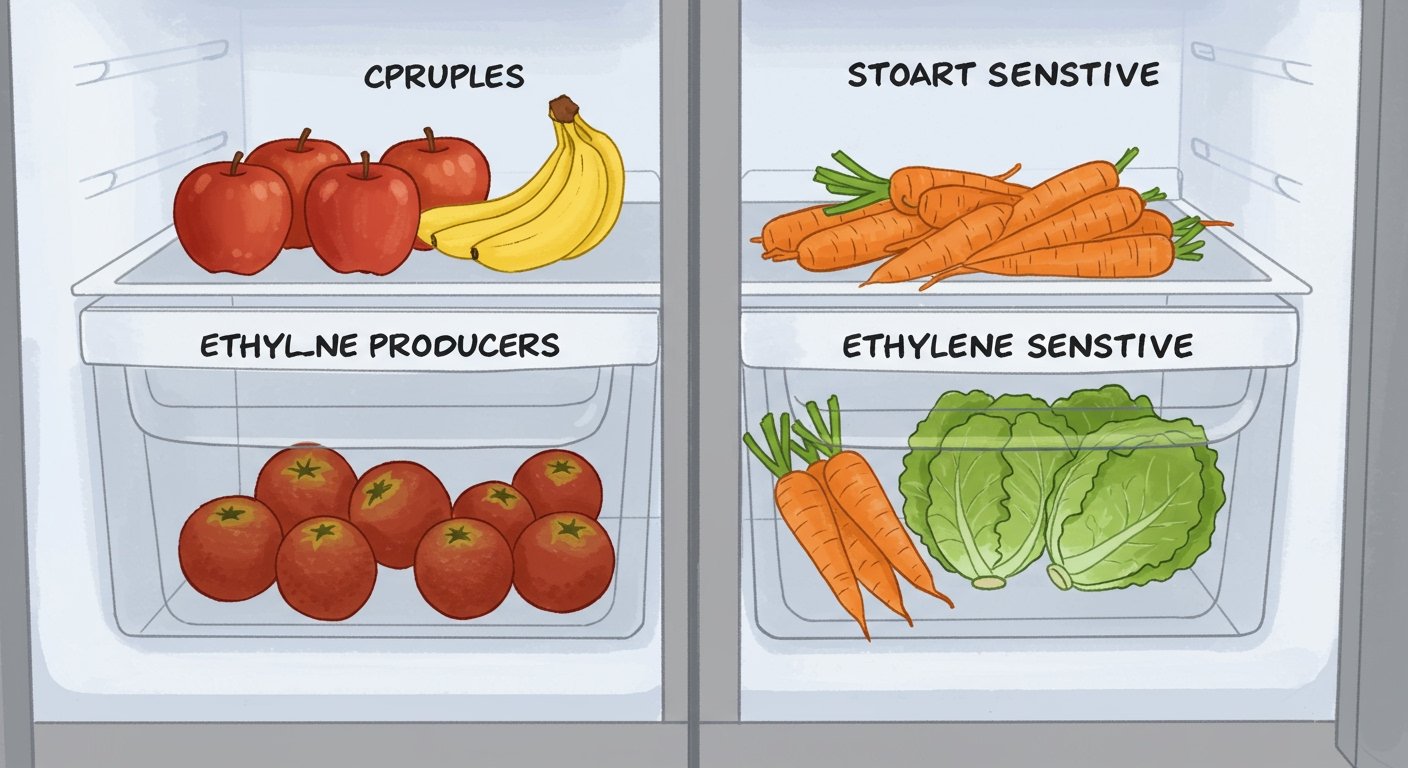
The Refrigerator Isn’t Always Your Friend
Should all produce be stored in the refrigerator? Surprisingly, no! While the cold slows down spoilage for many items, some produce actually prefers warmer temperatures or can be damaged by refrigeration. The USDA recommends keeping your refrigerator at 41°F (5°C) or less, but some items do better outside of this chill. [2]
Here are some common items that prefer the counter until ripe, or even permanently:
For comprehensive guidelines on specific items, the USDA Food and Nutrition Service provides detailed guidance on storing fresh produce. [2]
Storing Vegetables for Maximum Freshness
Knowing how to store vegetables correctly is crucial for maximizing their lifespan and retaining their nutrients. Each type has its own ideal environment.
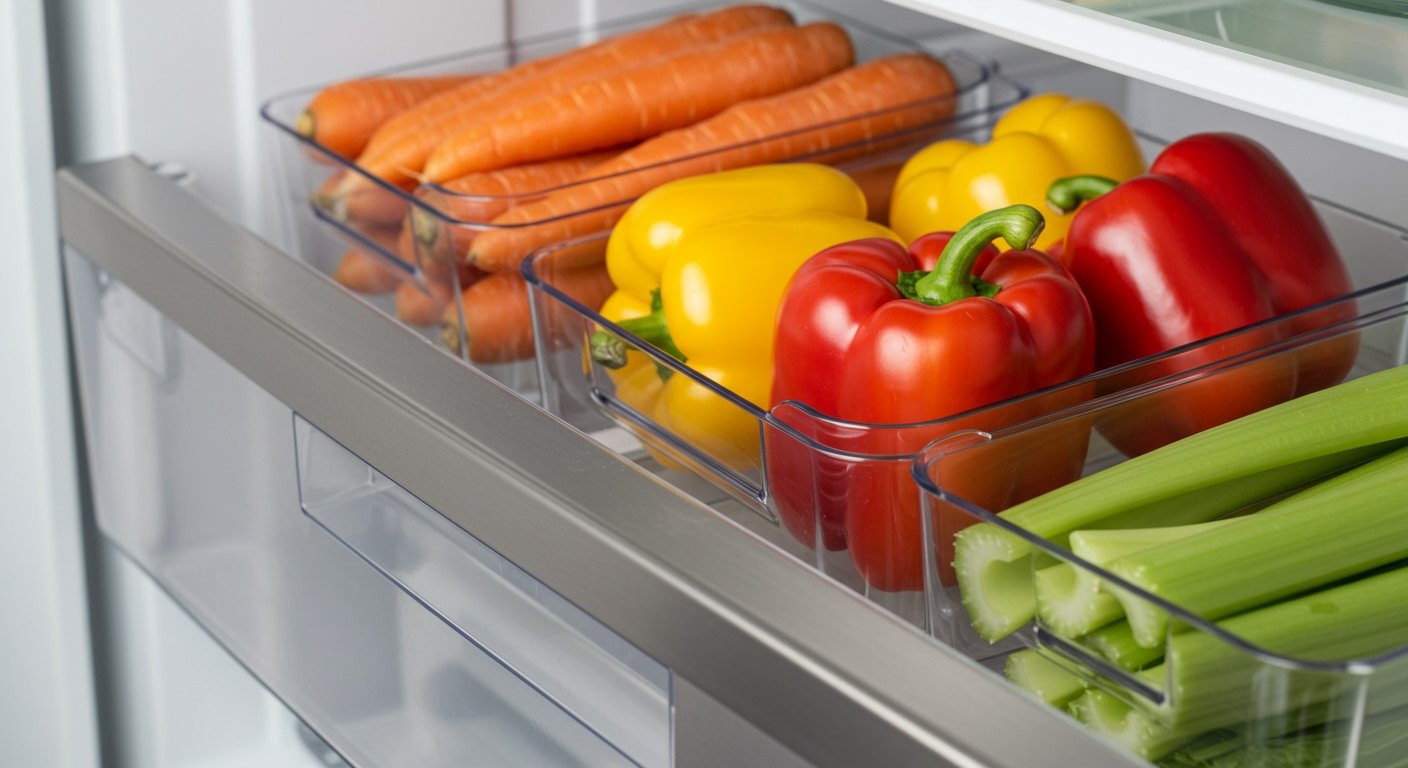
Leafy Greens and Herbs: Keeping Them Crisp
What are the best ways to store leafy greens and herbs? Leafy greens like lettuce, spinach, and kale, along with fresh herbs, are notorious for wilting quickly. The key is to manage moisture.
- Leafy Greens: Wash and thoroughly dry your greens before storing. Excess moisture can lead to rot, but too little will cause wilting. Wrap them loosely in a paper towel, then place them in an airtight container or a sealed plastic bag. This creates a slightly humid environment that keeps them crisp. Store in the crisper drawer of your refrigerator. [14]
- Herbs: For delicate herbs like parsley, cilantro, and basil, treat them like a bouquet of flowers. Trim the stems, place them in a jar with a little water at the bottom, and cover loosely with a plastic bag before refrigerating (except basil, which prefers room temperature). For more robust herbs, a damp paper towel in a sealed bag or container works well. You can find more tips on fresh vs. dried herbs in our guide on Fresh vs. Dried Herbs: A Cooking Guide.
Root Vegetables and Alliums
Cruciferous and Stem Vegetables
Keeping Fruits Vibrant and Delicious
Extending the life of your fruit means understanding its unique needs, especially when it comes to ripening and moisture.
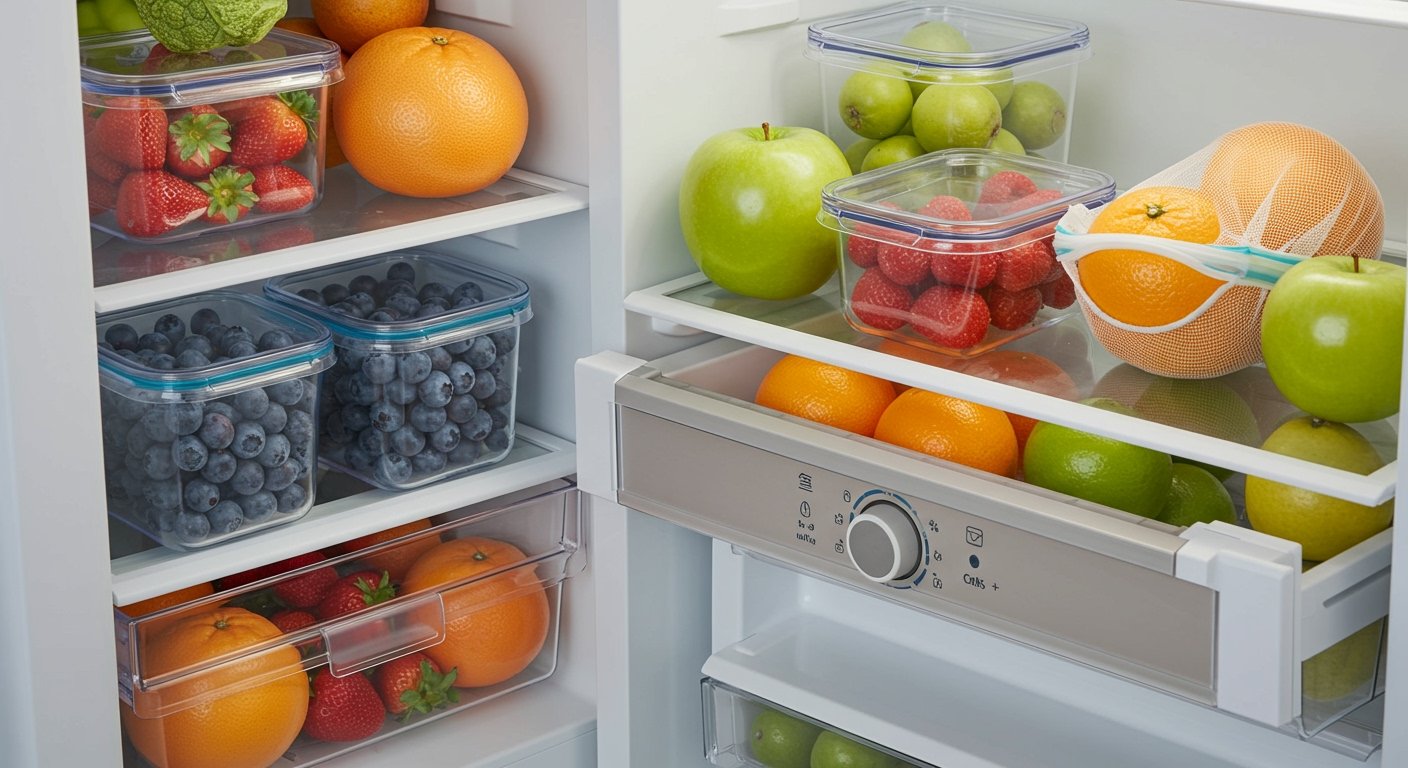
Berries: A Delicate Balance
How can I make berries last longer? Berries are notoriously fragile and prone to mold. The trick is to keep them dry and cool.
- Wash Just Before Eating: Do not wash berries until you are ready to eat them. Excess moisture encourages mold growth. [14]
- Vinegar Bath (Optional): Some people swear by a quick vinegar bath to kill mold spores. Gently rinse berries in a solution of 1 part white vinegar to 3 parts water, then rinse with plain water and *thoroughly* dry them. [19]
- Proper Storage: Store berries in a single layer in a breathable container, such as one with ventilation holes, lined with a paper towel. This allows air circulation and absorbs excess moisture, preventing them from getting mushy. Place them front and center in your fridge, away from the coldest spots. [14] This is the best way to store berries in fridge and make them last.
Apples and Citrus
Tropical Fruits
Essential Produce Storage Tips & Tools
Beyond individual produce types, there are general principles and tools that can significantly extend produce shelf life extension.

The Right Environment: Humidity and Airflow
Produce Storage Containers and Bags
Investing in the right produce storage containers can make a big difference. Look for:
General Tips for Longer-Lasting Produce
Beyond the Fridge: Storing Produce Without Refrigeration
While the refrigerator is a primary tool, knowing how to store produce without refrigeration is equally important for items that thrive in cooler, darker conditions outside the fridge.
By implementing these proper produce storage strategies, you’ll not only enjoy fresher, tastier food but also contribute to a significant reduction in household food waste. It’s a win-win for your plate and the planet!
Key Takeaways
- Separate ethylene-producing fruits from ethylene-sensitive vegetables to prevent premature spoilage.
- Not all produce belongs in the refrigerator; some prefer cool, dark, and dry counter or pantry storage.
- Manage moisture for leafy greens and berries by washing just before use (or drying thoroughly for greens) and using breathable containers.
- Utilize crisper drawers effectively for optimal humidity control for different produce types.
- Inspect and remove spoiled items immediately to prevent contamination of other fresh produce.
- Invest in appropriate produce storage containers and bags to extend shelf life.
